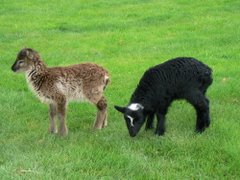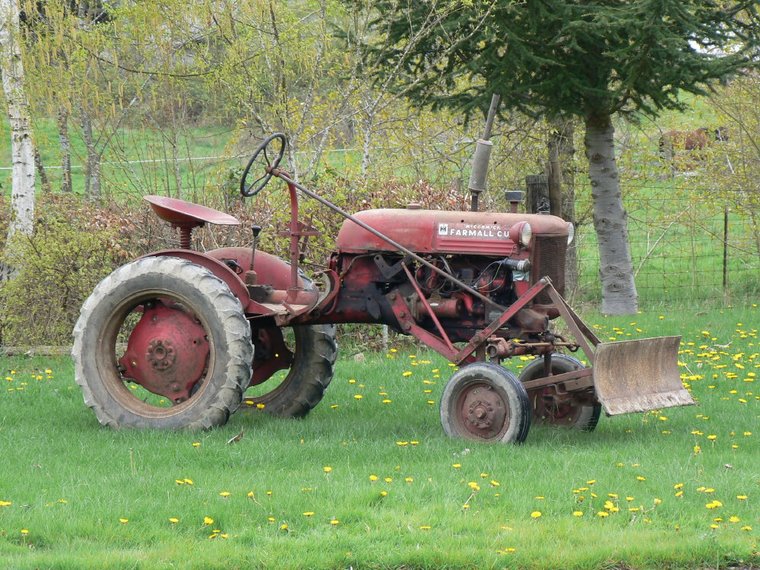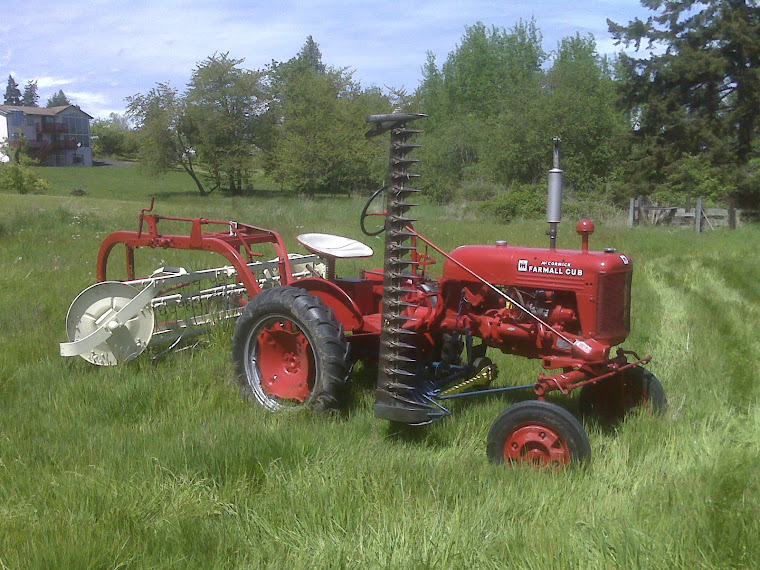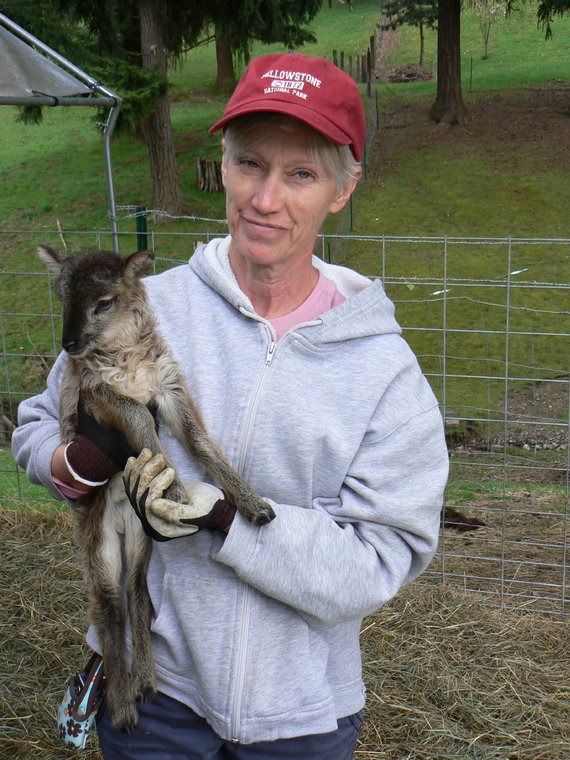Normally Soay sheep are done lambing by the last of May, at the latest. But we had a lamb arrive on this last Wednesday (the 27th of June). I knew our new lamb was coming - in fact, we still have quite a few lambs to come. In our main breeding group – that of self-colored (“s-c”) blacks – this ewe that lambed Wednesday is our first s-c black ewe to lamb this year. That leaves 10 more s-c black ewes to go, and 3 heterozygous “carriers” of s-c black, each of which has a 50% odds of delivering s-c black. How did this happen?
Late last summer and into early fall, it was very dry here and the pasture stopped growing completely. I saw many local tall grass pastures in this area being mowed and just left lying (they were mowed for fire control or appearances). I started stopping in places and offering to pick up the hay, intending to store it for winter to offset some of my high hay costs. Instead I ended up feeding most of it in the summer and fall. The problem, I eventually figured out, is that although they were eating the hay (which was not usually picked up promptly after cutting and curing), it apparently was not sufficiently nutritious for them to really thrive. In particular the 2006 lambs did not mature well. Since of course I wanted to utilized the genetics of my newly-produced 2007 ram lambs when I made up my 5 or 6 breeding groups in winter of 2006, only one of those had a mature ram. All the rest had rams that, it turns out, did not mature enough to successfully breed until January or February or even March! (In the most extreme case, I am pretty certain I have a lamb due on September 9th - do the math…)
The same delayed maturity thing also affected the yearling ewe lambs, and I am pretty certain that none of them (7 or 8 of them) are not pregnant at all this year. So I learned my lesson. After I figured out the nutrition problem late in 2006 and got them back on good Eastern Washington grass hay (expensive!), they have matured nicely with no lasting effects, however I sure messed up my breeding season!
So I figure I still have 7 or 8 mature ewes that are pregnant.
I was envious of everyone else reporting all their spring lambs earlier this year (we had 5 in the spring from the mature ram), but now I can still look forward to more lambs to come all summer! (Guess I have to look on the bright side, right?).
The good news about the genotype and phenotype of this first summer lamb is that the lamb hit the mark exactly as far as what was expected from the underlying genetics as I am beginning to understand them. First, both parents were from my “Black and White” (B&W) group – that is – self-colored blacks that also are homozygous recessive for the white spotting gene, thus are “solid black” bodies with pure white, irregular patches. Since both self-colored at the agouti locus and having white spots are recessive traits, if both parents are homozygous for the recessive genes, each HAS to pass on one copy of the recessive allele, and thus ALL offspring have to also be B&W.
What is not well quantified is HOW MUCH white spotting the offspring is likely to have. I have studied this in the near-famous flock of Sue Furness in Wales, where she has over 10 years or so been able to breed some Soays with almost 100% white spotting – that is – they look like white sheep with only. From that data, and my own observations on my flock (for which about 80 or 90% are either heterozygous or homozygous for white spotting). It’s a long story, probably un-interesting to most, but in a nutshell, the white spotting is likely to show up in certain body locations in a certain order, and the extent of spotting increasing with each generation where both parents have similar extents. In a sense the predicted extent of white is additive to the parents extent. Like many Soay subjects, I have a partially prepared document describing all this in gory detail. Someday I will finish it sufficiently to post it.
Here are a couple photos of the dam, the lamb, and the sire.
Teed's Aja '05 and Woodland Creek Raven -e '07
The new lamb (oh – here is the next good news – it was a EWE lamb! That contrasts against last year where every B&W lamb that I produced was a ram! I have 5 B&W rams! Anybody want one?). The other interesting part, from a genetics point of view, is that dam (Aja) is truly polled. If the ewe lamb (named Raven) ends up polled, she will be a combination of many of the far less common genotype / phenotypes in Soay in North America.






